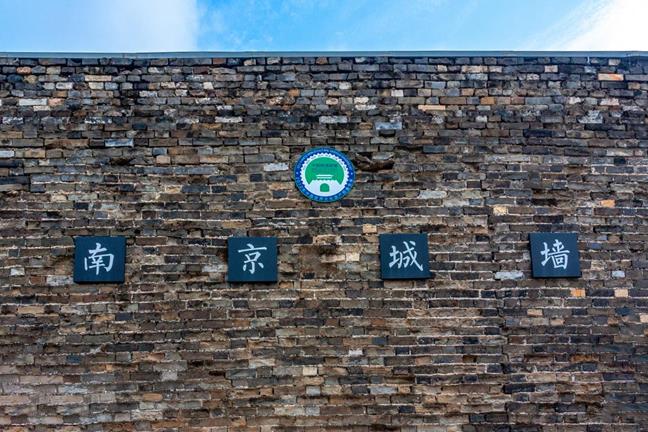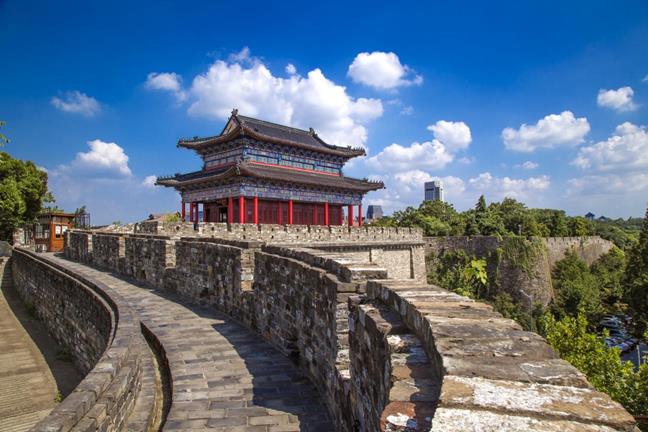Nanjing City Wall Museum
Autumn is a sentimental season. Why not visit the Nanjing City Wall Museum to explore the strength of the Nanjing City Wall of the Ming Dynasty, the "greatest city wall in the world", in a history of 650 years.
The Nanjing City Wall, which was built in 1366, is the longest, largest, most authentic, oldest, largest, and best-preserved brick-and-stone city wall in the world, and the largest historical and cultural heritage site in Nanjing. It integrates military defense, spatial planning, flood prevention, and other functions. All of the grand barbican, exquisite water gates, and countless traceable inscriptions on the wall bricks constitute an open-air trove of military, technology, history, culture, and art treasures of the early Ming Dynasty. As the largest city wall-themed museum in China, the Nanjing City Wall Museum conveys the stories of the Nanjing City Wall.
(Photo source: Tuchong Creative)
The Nanjing City Wall Museum is adjacent to the Zhonghua Gate Barbican and connected to the east of the Laomendong Pedestrian Street. It looks like a semi-transparent glass castle at the foot of the ancient city wall. The architectural plan of the Nanjing City Wall Museum is L-shaped and integrates the essence of the ancient city wall and the modern exhibition hall by extracting architectural elements such as horse paths and platforms from the Zhonghua Gate Barbican.
The exterior wall of the Nanjing City Wall Museum is a light gray glass curtain wall. Like a mirror, it prevents you from getting a glimpse of the inside and reflects the sky, white clouds, black bricks, trees, and the bustling ancient capital. At sunset, if standing in front of the glass curtain wall on the west side of the museum, the Zhonghua Gate Barbican is reflected together with a golden red sunset before us. The magnificent and ever-changing city wall, the tall and straight trees on the streets, and the vehicle taillights make up a colorful oil painting that covers the Ming City Wall Museum like a coat made of dazzling light and shadow.
Stepping into the museum, the glass curtain wall vanishes, and the Zhonghua Gate Barbican and high walls catch your eyes. The Nanjing City Wall Museum covers a total area of 12,000 m2 and boasts more than 2,000 collections. It showcases the historical, cultural, and heritage values of the Nanjing City Wall in the aspects of design philosophy, city-building technology, imperial capital prestige, military defense, and heritage inheritance.
(Photo source: Tuchong Creative)
As soon as you enter the museum, a delicate and huge arched stone carving component catches your eyes, and the museum's sense of historical significance fills your mind. This is the Shiquan Gate of the Nanjing Palace, which was part of the structures of the imperial harem. Themed "unique city wall", the museum astonishes you by showcasing exhibits in the aspects of design philosophy, city-building technology, imperial capital prestige, military defense, and heritage inheritance. In terms of city-building technology, text explanations and figure statues are used to reproduce the process of making wall bricks (selecting soil and warming water, practicing and pressing mud, making billets in the shade and dry, installing and burning kilns, and soaking water to open kilns), vividly depicting the hardships of building a city at that time.
Speaking of wall bricks, I have to mention the kilns where bricks were burned. There is a Mantou Kiln donated by Lichuan County, Jiangxi Province in the museum. The kiln was discovered during an archaeological survey of the Nanjing City Wall Brick Kiln Site in Lichuan County (one of the production areas of wall bricks), Jiangxi Province, and then donated to the Nanjing City Wall Museum. It is not only an important witness of Lichuan County making wall bricks for the city walls of Nanjing over 650 years ago but also a physical representative of numerous kilns. It embodies the superb skills and hard work of numerous laborers who built the outstanding city walls for Nanjing.
(Photo source: Tuchong Creative)
The museum adheres to the core design concept of "exhibiting walls". In order to showcase the unique value of wall bricks, the city walls and wall bricks of Nanjing are concentrated in an array in a dedicated area. Nearly 700 wall bricks make up the walls in the perimeter. Each brick is like a neatly arranged book on the bookshelf waiting to be flipped through. A visual feast with wall bricks as the main character is presented before us.
There is also an exhibition of typical "walls" from all continents for us to appreciate their stunning aesthetic taste and the precious cultural heritage of humanity therewithin. Such as the Hwaseong Fortress in South Korea - a practical and harmonious flat mountain fortress; the Himeji-jo in Japan - the castle of egrets under the protection of gods; the Historic Fortified City of Carcassonne in France - the largest bastion in Europe; the Historic Centre of Rome in Italy - the eternal city of inheriting civilization.
The Nanjing City Wall has recorded the stories of various figures and the city itself and maintained a close relation with our life in the changes of the city. Today, the Nanjing City Wall has been endowed with new life and value. Every resident in Nanjing truly cherishes the city wall from the bottom of heart.





